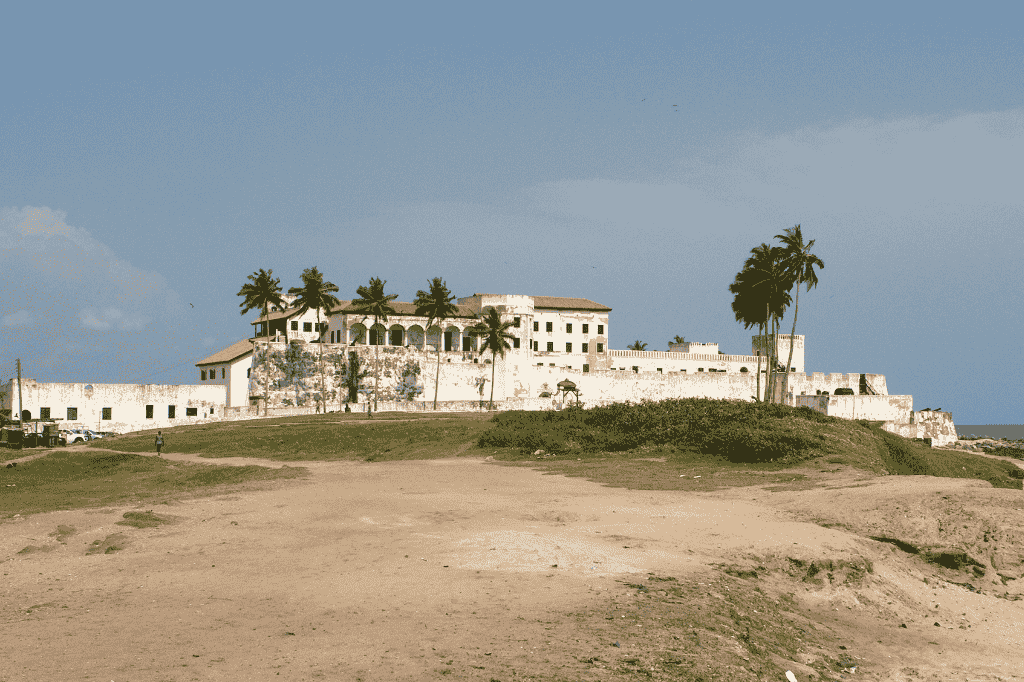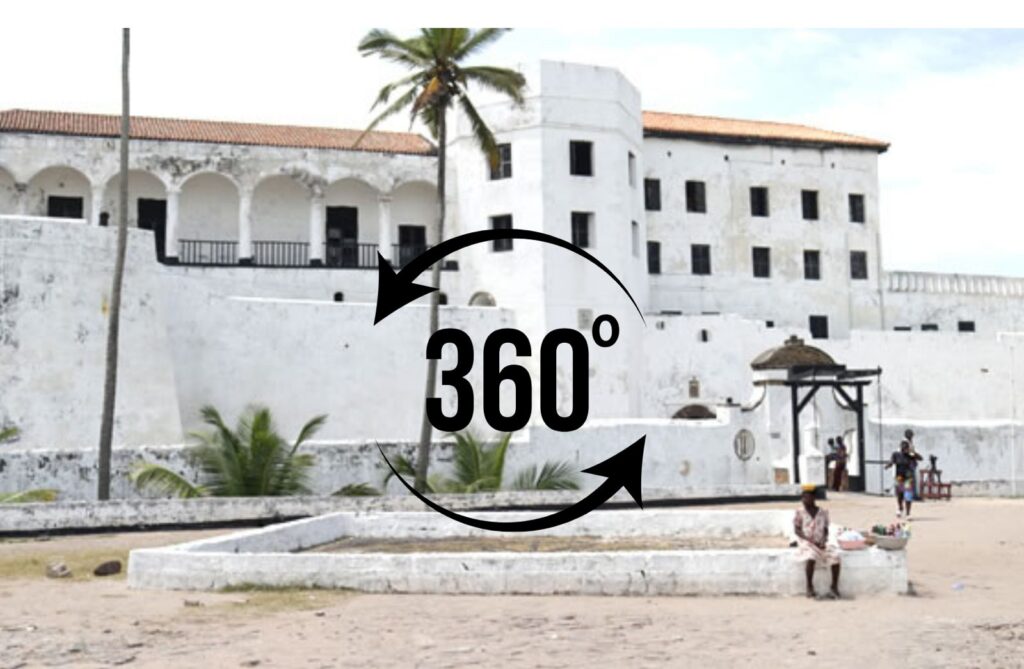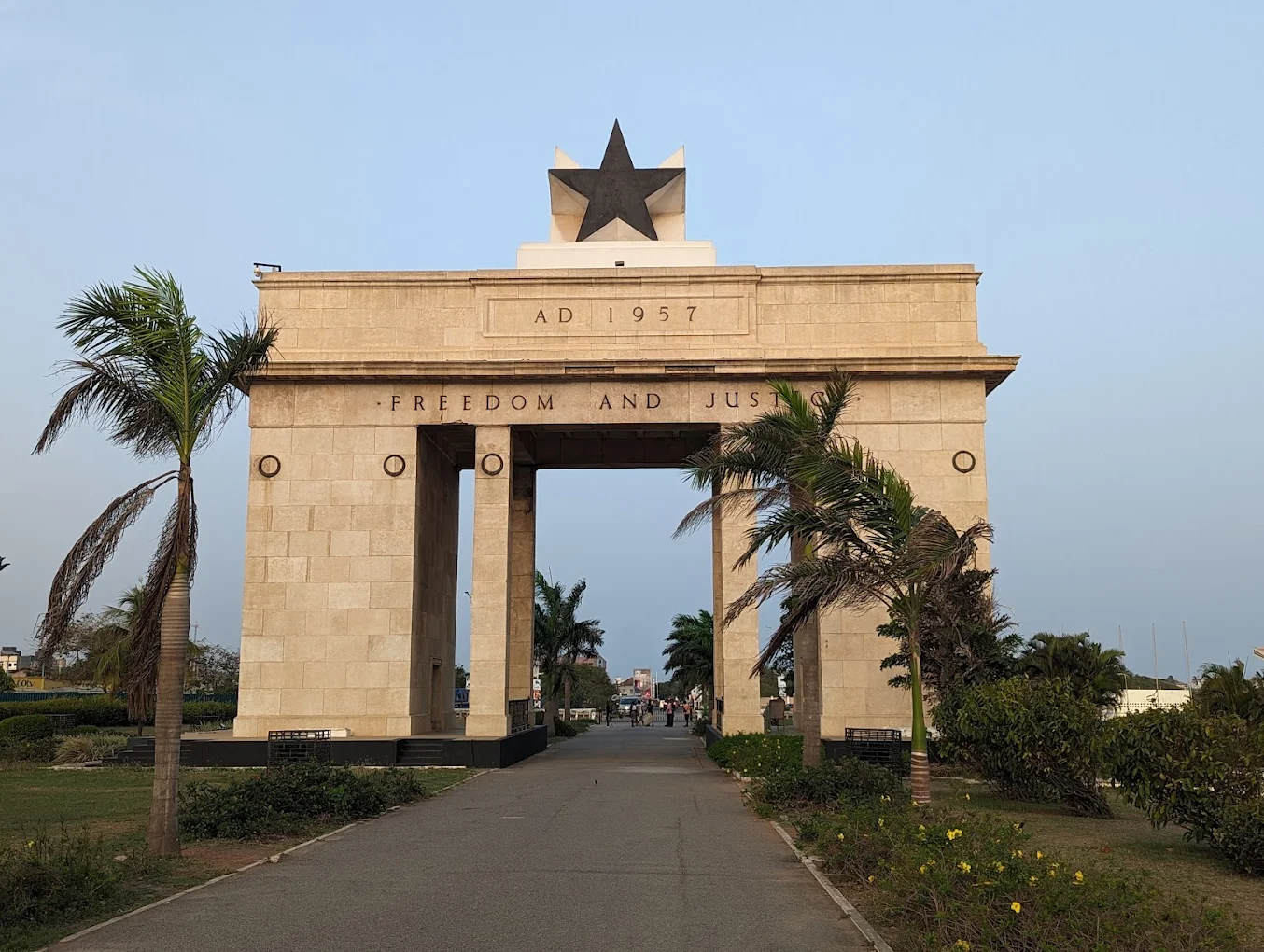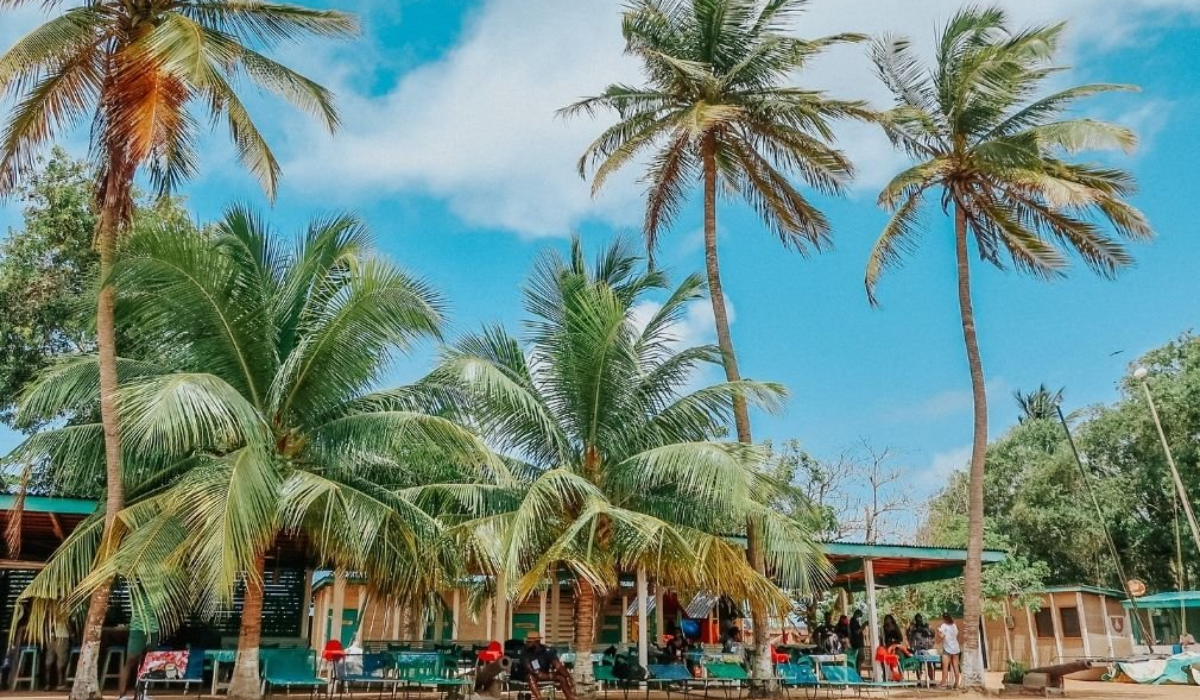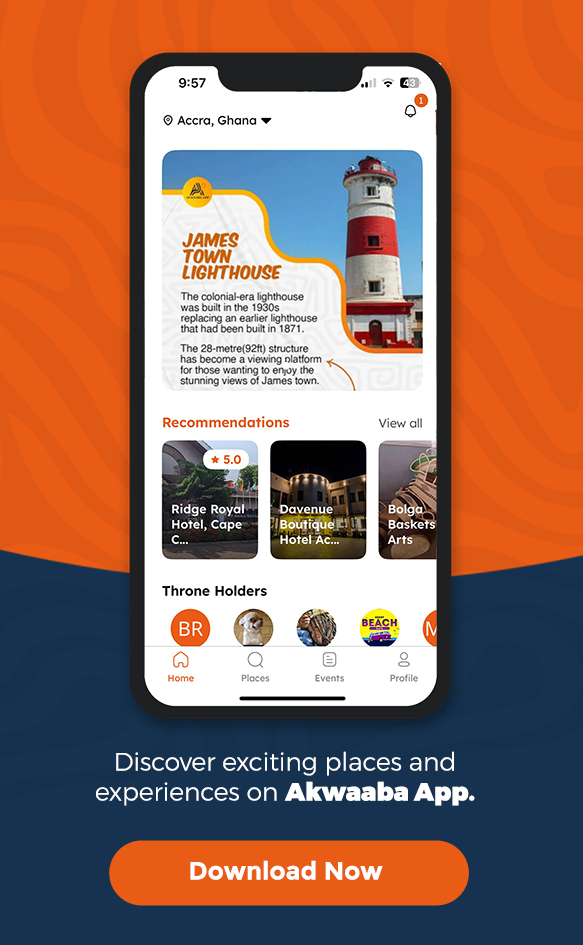A proud historical monument, Elmina Castle is located on Ghana’s coast and tells a story that has shaped human history. Throughout its long history, this massive white fortress has witnessed trade, tragedy, and transformation – from its beginnings as a gold trading post to its dark role in the slave trade to its current role as a powerful memorial to human strength.
Would you like to know where exactly this historic fortress can be found? About 80 miles west of Accra, Elmina Castle is located in the fishing town of Elmina in Ghana’s Central Region. It is a UNESCO World Heritage site that attracts thousands of visitors every year interested in its history and significance during the transatlantic slave trade.
Check out other Cultural and Heritage Sites in Ghana
History of Elmina Castle
Portuguese traders built St George’s Castle in 1482, and the Dutch captured it in 1637, making it a UNESCO World Heritage site. Elmina Castle is the oldest building in sub-Saharan Africa that dates back to the first trading post on the Gulf of Guinea. The small Elmina fishing town is located in Ghana’s coast, near Cape Coast. St George’s Castle is one of Ghana’s most popular attractions. Originally built by the Portuguese in 1482, the Dutch captured it 150 years later and turned it into the headquarters of the West Indies Company.
The tours through the Elima Castle dungeons provide an insight into the gruesome trade that replaced gold exports. Guided tours are available at the Castle, which houses a small museum. Despite its dark history, the white-washed Castle walls contrast starkly with their stark beauty. For views of the town and castle, Fort St Jago lies across the lagoon from the castle.
How the Gold Trade Shifted to Slavery?
This castle was originally built as a trading settlement, but later became an important stop on the slave trade route. After an unsuccessful attempt in 1596, the Dutch seized the fort in 1637 and took over the whole Portuguese Gold Coast in 1642. Dutch slave traders continued their trade until 1814. The Dutch Gold Coast, including the fort, became part of the United Kingdom in 1872.
As slaves replaced gold as the major commodity of commerce, storerooms were converted into dungeons. A guided tour (included in the entry fee) takes you to the grim dungeons, punishment cells, the Door of No Return, and the turret room where the British imprisoned the Ashanti king, Prempeh I.
Architecture & Features of Elmina Castle
An impressive castle’s architecture is a testimony to its history of power and oppression. The coastline is lined with massive whitewashed walls built to withstand both enemy attacks and harsh marine conditions. Since their construction over five centuries ago, these fortifications have largely remained intact.
Among the most emotional features is the infamous “Door of No Return,” which marked the final passage through which enslaved Africans were forced onto ships, never to return home. There is a sense of overwhelm that visitors often describe when standing here today due to the weight of history.
Religion adds another layer of complexity to the story of the Elmina Castle tour. It is a testament to how European powers justified their actions by citing religious doctrine that the Portuguese chapel, which was later converted into an auction hall by the Dutch, still stands.
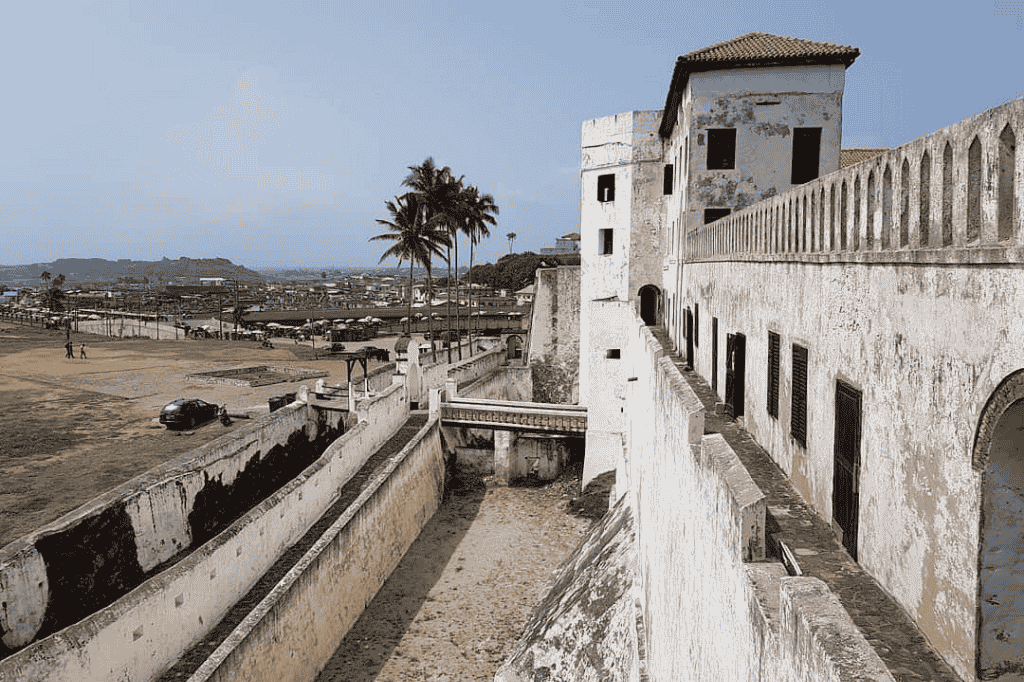
Best Spots for Historical Photography & Bird’s Eye Views
The living conditions of enslaved Africans and European officers are starkly contrasted in the internal layout. The governor’s quarters had ocean views and fresh air, whereas hundreds of captives lived in dark, cramped areas with little ventilation in the dungeons below.
Elmina Castle & The Transatlantic Slave Trade
A staggering number of slaves were transported through Elmina Castle during the slave trade. This fortress was the destination of hundreds of thousands of enslaved Africans, according to historical records. Elmina in Ghana was connected to Portuguese America, British colonies, and the Spanish Empire by trade routes.
Dungeon life was brutal in the castle. Prior to being shipped across the Atlantic, men and women were separated, chained, and kept in dark chambers. Many of the prisoners died from the harsh conditions.
During their control of Elmina, the Dutch West Indies Company significantly expanded slave trade operations. The transatlantic slave trade was facilitated by the castle’s extensive network of trade relationships with local leaders and other European powers.
The Transformation of Elmina Castle – From Slave Fort to Heritage Site
During the 20th century, Elmina Castle was used for various purposes, including training police officers and teaching secondary school students. As a historical site, it cannot be overlooked. A restoration project began in 1996, leading to the establishment of the Elmina Castle Museum.
Professional guides lead visitors through the castle today, telling stories and sharing historical facts. There is an impressive collection of artefacts in the museum, including gold weights, chains, maps from colonial times, and cultural exhibits that help visitors understand the castle’s long history.
Planning Your Visit to Elmina Castle
Elmina Castle is easily accessible. You can take a comfortable, air-conditioned bus from Accra to Cape Coast, then take a short taxi ride to Elmina. It is best to visit during the dry season (November to March) when the weather is most pleasant.
International visitors are charged a different rate than local visitors. Our guided tours ensure that you receive detailed historical information about what you’re seeing. It is permitted to take photographs in most areas, though some spaces, due to their historical significance, require special permission.
The Elmina Castle Museum – Artifacts & Culture
Following a tour of the castle, visitors can relax and rejuvenate in the museum’s restaurant and bar. The historical Dutch Cemetery in Elmina, colonial-era buildings, and traditional Posuban shrines all add layers to your understanding of this remarkable city. A bookstore and a gift shop are also available at the museum, along with parking. An open courtyard is available for outdoor activities. Visitors can learn more about the castle’s complex history from the museum’s collection of artefacts, including gold weights, shackles, maps from colonial times, and cultural exhibits.
Nearby Attractions & Things to Do in Elmina
Visitors can explore the site’s former storehouses, slave dungeons, chapels, and governor’s chamber. There is also a cell where once a King of Asante was imprisoned. Additionally, visitors can take pictures of Elmina Castle from the battlements of the four-storey St. George’s Castle of the nearby harbour, fishing boats, and Fort St Jago, all from a bird’s eye perspective. Markets sell traditional crafts, textiles, and fresh seafood.
Explore a 360 Tour of Elmina Castle
Step into history with a virtual 360° tour of Elmina Castle. Explore its storied chambers, dungeons, and breathtaking coastal views from anywhere in the world. Immerse yourself in the past and experience one of Ghana’s most iconic landmarks like never before.
Explore Elmina Castle Through Akwaaba
Before your trip, download the Akwaaba App to make your experience even more rewarding. It offers detailed historical information, virtual tours, ticketing assistance, and navigation assistance. This is an excellent way to prepare for your visit and ensure you don’t miss anything important. In addition to providing information about nearby attractions, accommodation options, and local transportation, the app also helps you plan a comprehensive trip to Elmina.
Are you ready to explore this remarkable piece of history? It offers more than just a glimpse into the past—it offers valuable lessons about human dignity, resilience, and the importance of preserving historical memory.
